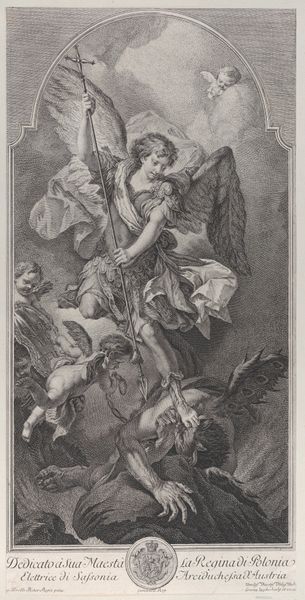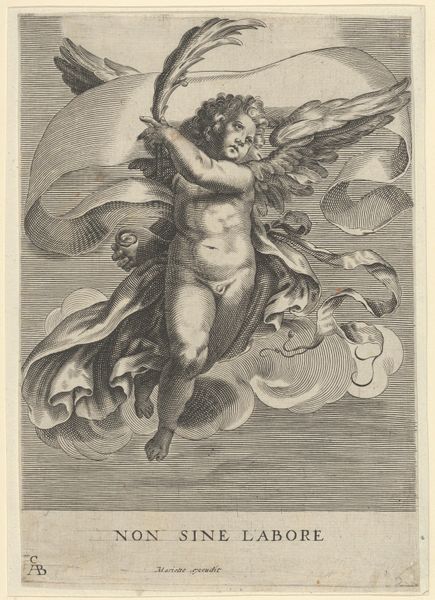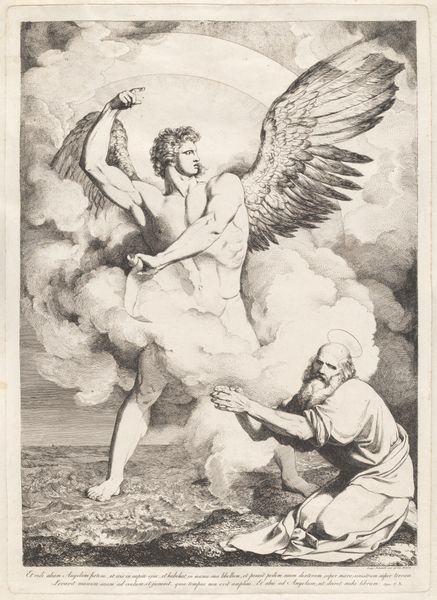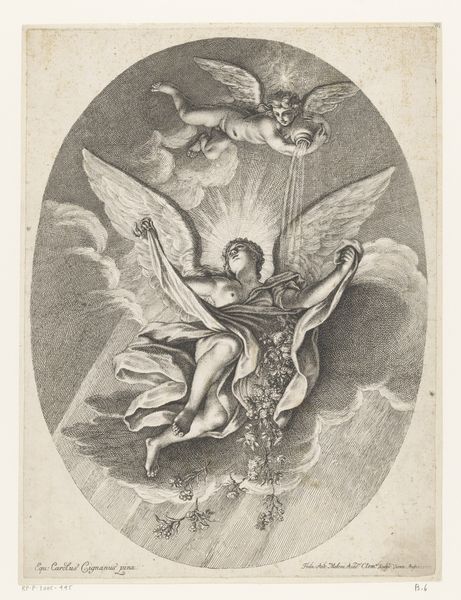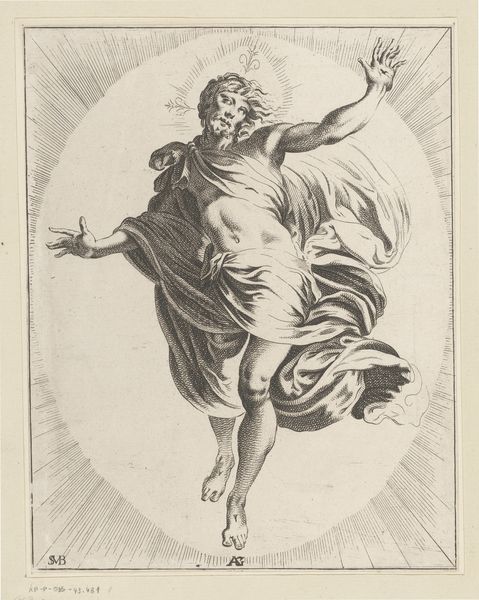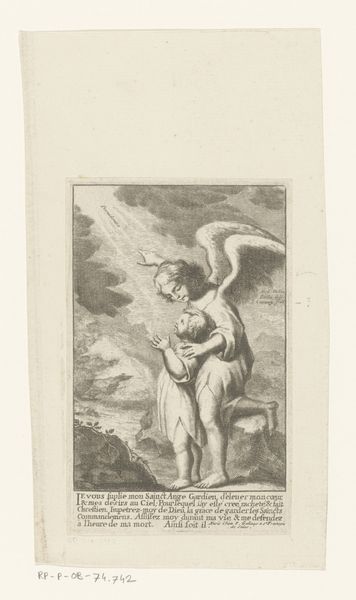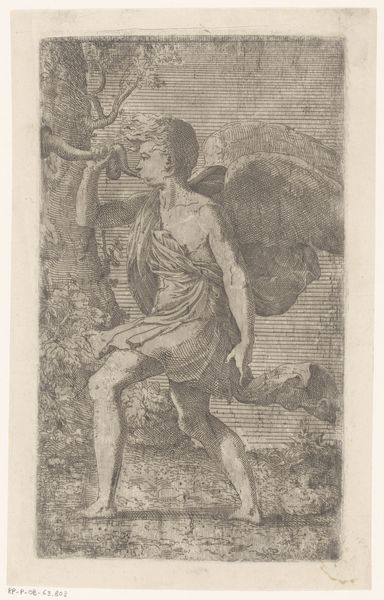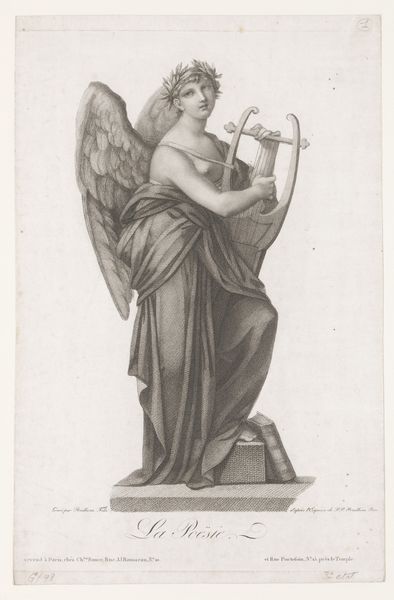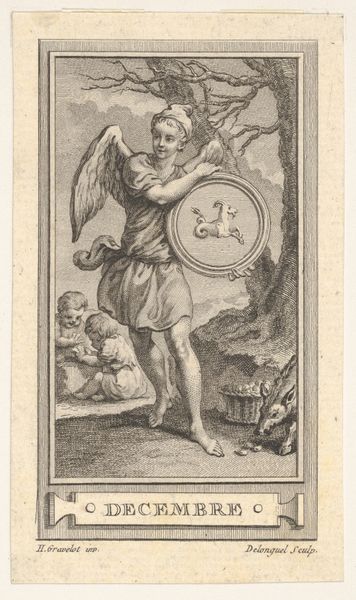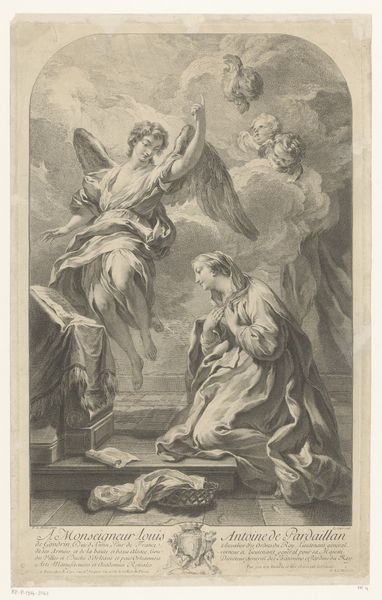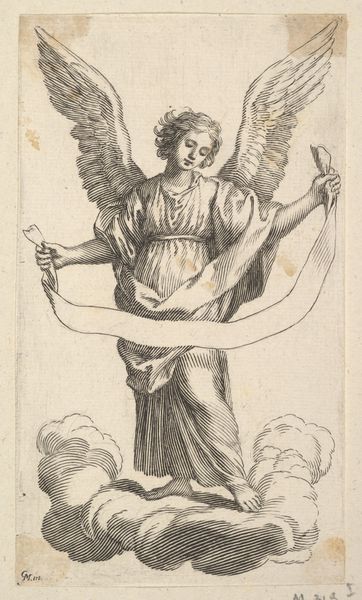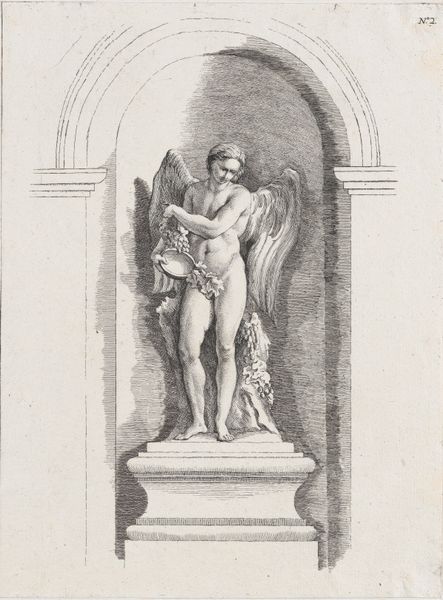
print, engraving
#
allegory
#
baroque
# print
#
figuration
#
history-painting
#
engraving
Dimensions: height 443 mm, width 279 mm
Copyright: Rijks Museum: Open Domain
Curator: Welcome. We're standing before "Allegory of Victory", an engraving created by Lucas Kilian in 1614. It’s currently held here at the Rijksmuseum. Editor: Okay, my initial reaction? This winged figure has such a solid presence—she radiates serene strength. I’m fascinated by how the monochrome brings out these incredible textures, from the smoothness of her skin to the feathered wings. There is also Latin script within the engraving, it’s almost like graffiti art in that the Latin has this street vibe to it. What's your perspective? Curator: Indeed, it's a beautiful representation of baroque allegory. The figure embodies "Victoria", Roman goddess of Victory, celebrated throughout the evolving concept of empire from Antiquity to the Early Modern Era. It showcases Victory as both a symbolic ideal and a propagandistic image of triumph. Editor: I see what you mean—holding up that laurel wreath while bearing that shield feels like a deliberate statement. It’s almost as though this figure of "Victoria" is both offering peace and reminding everyone of her battle strength, it's intriguing! What about Kilian as an artist—where does he fit into all of this? Curator: Kilian belonged to a family of Augsburg engravers who greatly contributed to disseminating visual culture through print. "Allegory of Victory" speaks to how printmakers engaged in political and intellectual dialogues, creating visual arguments through established iconographic vocabularies. The text incorporated further clarifies its moral underpinnings. Editor: Makes total sense. For me, seeing the fine detail achievable with the engraving and contrasting that against what I imagine the cultural moment was like, makes the work more impactful. It’s an image with deep roots and bold wings. Curator: Exactly. And hopefully it's encouraged a re-examination of what "Victory" truly represents for both past and present societies. It prompts necessary reflections on the values associated with triumphs and consequences too. Editor: Absolutely. "Allegory of Victory" leaves you thinking not just about who wins but what those wins really mean. It’s a thoughtful end note.
Comments
No comments
Be the first to comment and join the conversation on the ultimate creative platform.
